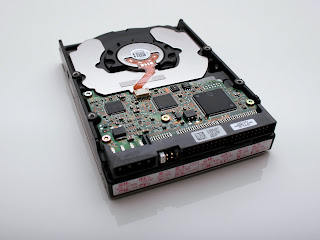The key determinant of how much data a computer can keep is the quantity of storage that is built into it. If you're considering purchasing a new computer, the alternatives with more GB may have lured you in. And that's okay, particularly if you want to store a lot of data. There is one more thing you should consider, though. We're talking about the kind of storage.
When it comes to storage options, it is increasingly commonplace to find PCs with HDD or SSD. There are also some that utilize M.2 NVME as a storage system, but to a lesser extent. In this post, we explain how each one functions, what sets them apart, and when to pick one over the other.
1. HDD (Hard Disk Drive)
Hard Disk Drive is referred to as HDD. Typically, a hard disk is used to describe this kind of storage. As opposed to other devices like RAM, HDDs are made to store digital content permanently and not just momentarily. They are therefore used to store user papers, installed programs, and operating system files. All of this information is kept even if the power is turned off.
The IBM business launched the first HDD in 1956. Floppy disks and this kind of storage coexisted at the time. The toughness of the structure was one of the contrasts between the two. They might be distinguished correctly by using the term "hard disk."
A hard disk is made up of magnetic heads and one or more platters placed vertically. The numbers 1 and 0 are represented by sequential changes in magnetization direction. The data stored on the platens is written and read using a coding and decoding method. The latter must rotate and may revolve rapidly depending on the model. The platters of HDDs designed for servers may spin at 15,000 rpm.
Fascinatingly, magnetic materials are not used to create the platters. Instead, glass or an aluminum alloy is employed. They are covered with a small coating of magnetic material, no thicker than 20 nm, to make them magnetic. However, you should be aware that even though the space between the two components has shrunk over time, the heads do not really contact the platters when they are spinning.
2. SSD (Solid State Drive)
A persistent storage device that employs solid-state circuitry is called an SSD. It was first utilized to store operating system data and swap areas and is a significantly speedier alternative to conventional hard drives. Although it could appear to be a more current technology, the original idea was actually employed for the first time in the 1950s. Dr. Fujio Masuoka, who worked for Toshiba at the time, didn't introduce a flash-based SSD to the market until 1980.
The first solid-state drive models based on this technology started to emerge over time. For instance, the 18 GB 3.5-inch drives were introduced by the business BiTMICRO in 1999. SSDs were improved by specialist businesses during the ensuing years, making them the quickest storage choice. Their capacity, which previously lagged behind that of HDDs, has also significantly grown.
An SSD can receive, store, and transfer information thanks to a number of its parts. They first need a chip that is extremely similar to SoCs. They consequently have a CPU and a tiny cache-like temporary memory. NAND modules acting as storage are connected via a controller. To improve drive performance, NAND chips are put in parallel.
To maintain the standard, SSDs maintain the mechanical hard disk's dimensions. However, because they don't need actual moving parts, they take up significantly less room. To store data outside, flash memories are furthermore utilized in sticks and cards.
3. M.2 NVME
M.2 NVME memory, in addition to HDDs and SSDs, is becoming more and more popular. In actuality, this is hardly a brand-new method. Instead, it is a protocol for accessing and transmitting data on flash devices, or SSDs. Because it can perform at a far higher level than its predecessors, this makes a difference.
The new SSDs using the NVME protocol differ significantly from the SSDs we were previously familiar with in that they are connected via the motherboard's PCI Express bus. Tens of thousands of parallel command queues are supported by this. Because of this, M.2 NVME supports faster read and write speeds than SSDs with conventional designs. However, the way that they work is precisely the same as how the solid-state drives that we covered in the part before work.
Which Is Better ?
You will have to select one form of storage over another based on your demands. Even while HDDs often have a bigger capacity and are less expensive, they perform poorer. As a result, the HDD might be your buddy if your goal is to store a lot of files on your computer but your budget is limited. The performance of this kind of equipment is typically hampered by the hard drive, though.
When it comes to quick and responsive operations, SSDs are strongly advised. Of course, some SSDs are quicker than others, but they often outperform HDDs in terms of performance. This is the best choice if you plan to play with a computer. And if you anticipate using your computer often, consider getting a drive that follows the NVME standard.







No comments:
Post a Comment